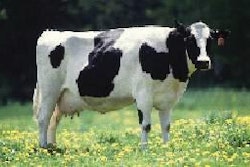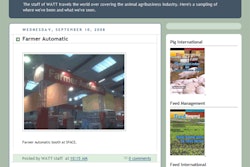With a human population that is ever-growing and more people likely to consume animal products as standards of living continue to rise, India seems poised for market expansion in the areas of animal feed and livestock production.
India's Compound Livestock Feed Manufacturers Association (CLFMA) points out that while the Indian livestock feed industry is quite old, it is still in a very primitive stage, supplying only about 5 percent of cattle feed and 30 percent of poultry feeds for the country. According to the association, the bulk of that feed is being produced in large part by home and custom mixers. It sees feeding animals with compound feeds as a route to improve efficient use of the ingredients available.
Livestock population
According to the CLFMA, India is bestowed with a huge livestock population comprised of 222 million cattle, 98 million buffaloes, 124 million goats, 61 million sheep and 489 million poultry. Dairying in India has emerged as an important sub-sector accounting for nearly two-thirds of the total livestock contribution to GDP with an encouraging growth rate of 5 per cent. Unlike many developed dairying countries where large mechanized farms predominant, more than 70 million rural families are engaged in milk production in India. Landless, small and marginal farmers with limited resources account for 65 percent of the total milk production in the country. Feed International recently spoke with Ms. Shilpa Kamath, director, India Assist Pvt. Ltd. about what it takes for a global business to expand its interests in the animal feed market in that country.
FI: Why should businesses consider having a presence in India?
Ms. Kamath: India's economy is on the fulcrum of an ever-increasing growth curve. With positive indicators, such as stable 8 to 9 percent annual growth, rising foreign exchange reserves, a booming capital market and rapidly expanding FDI inflows, India has emerged as the second fastest growing major economy in the world. The domestic Indian and international markets are fast-expanding with a lot of untapped potential and multitude of opportunities.
FI: How has the business environment in industry changed in the past few years?
Ms. Kamath: The time has come for investment, expansion, growth, and diversification. The Indian entrepreneur also has its sights fixed on project exports. Intense competition is the keyword of the present day business environment. Therefore, one needs professional expertise to have a cutting edge over competitors.
FI: What are some of the difficulties global companies face when they want to start doing business in India?
Ms. Kamath: The people in India still live with some kind of colonial hangover. Hence, people management at various levels mostly seems to be a challenge. It is expected that one is equipped to handle these and understand people's sensitivities better. One cannot afford to work in India on an impersonal level or be too process-oriented. It is important to realize that the processes are good only when people put them right. It is advisable to appoint a local partner before entering India, to finish most of the work before coming in contact with the government bodies to avoid any kind of delays resulting from people management.
FI: Where can companies find assistance if they wish to enter the animal feed market in India?
Ms. Kamath: CLFMA is the sole representative of the compound livestock feed industry. It was formed in 1967 and now has around 200 members, including all sectors of the livestock industry. CLFMA of India is recognized not only by livestock farmers, central and state governments, government departments, agricultural universities, veterinary colleges and national research institutes in the country, but also by related sectors outside the country. They can be contact at www.clfmaofindia.org.
FI: How has consumer demand for animal products changed in India in recent years?
Ms. Kamath: The animal feed industry in India is poised for growth. Animal feed is currently evolving from a fragmented industry into an organised sector. They are using increasingly modern and sophisticated methods in an effort to incorporate global best practices. As per the estimates of the industry body, CLFMA, domestic demand for compound feed in India currently stands at around 45 million metric tons (MT) and is expected to grow to around 68 million MT by 2010
FI: How is your company involved in helping outside businesses become established in India?
Ms. Kamath: India Assist Pvt. Ltd provides all the information and assistance necessary to foreign companies setting up offices in India. We are assisted by a team of competent experts and professionals in the technical, marketing, financial, economic and tax fields. And this team believes in delivering the goods. We provide all information on Indian laws for foreign and NRI direct investment. We also believe in maintaining liaison with various government bodies and financial institutions on a regular basis. We will stand by you, right from the stage of conception to the commissioning of your project in India.
.jpg?auto=format%2Ccompress&crop=faces&fit=crop&h=48&q=70&w=48)



.jpg?auto=format%2Ccompress&fit=crop&h=167&q=70&w=250)











